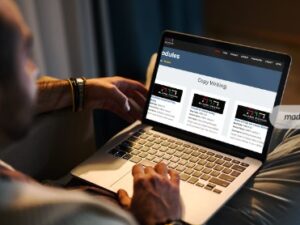
- Description
- Curriculum
- Reviews
- Grade
This course introduces learners to the fundamentals of marketing to businesses with a strong focus on the digital landscape. Participants will explore the core concepts of digital marketing, including various career paths, and how to make informed decisions about choosing a specialty. A key component of the course is comparing traditional and digital marketing methods, allowing learners to assess which approach delivers better results in today’s business environment.
Learners will gain practical knowledge of essential digital marketing techniques and channels, such as display advertising, pay-per-click (PPC), email marketing, and Integrated Digital Marketing (IDM)—a modern approach that combines multiple strategies for greater impact. They will also understand the critical concept of conversion, exploring how digital marketers move potential customers through the sales funnel to achieve measurable results.
The course further equips learners with skills to boost visitor engagement, increase web traffic, and effectively use digital marketing tools to enhance online visibility. Finally, it covers the importance of managing a professional digital footprint, digital presence, and digital identity, empowering learners to not only market brands effectively but also build and maintain their own professional image in the digital world
At the end of this lesson, the learners should:
-
understand the concept of marketing to businesses
-
identify choices and career path in digital marketing.
-
compare digital and traditional marketing and identify which one works better.
-
learn the processes, techniques and channels used in digital marketing.
-
apply the required skills in digital marketing.
-
create display ads for digital marketing
-
other types of digital marketing called pay-per-click
-
use of email marketing in digital marketing.
-
use contemporary style of digital marketing called the Integrated Digital Marketing
-
conversion is a vital part of digital marketing, understand how the process plays out.
-
gain knowledge of the importance d and examples of visitors’ engagements.
-
discover how to build traffic using digital marketing.
-
identify and use tools available for digital marketers.
-
understand and apply the concepts of Digital Footprint, Digital presence and Digital Identity Management as a digital marketer.
-
1Guidelines on this Course
Learn about the general overview of the course
-
2How to Make the Most of this Course
Learn how to best use this course.
-
3What is Marketing
At the end of the lesson, the learner should be able to understand the concept of marketing to businesses
-
4Career in Marketing in a Digital Economy
At the end of this lesson, the learner should be able to identify a choice career path in digital marketing.
-
5Digital Vs Traditional Marketing
Learn about the comparison between digital and traditional marketing and identify which one works for you.
-
6Digital Marketing vs Content Marketing
Learn the comparison between digital and content marketing
-
7Quiz: DME01 Module 1DME01 Module 1 Introduction to Digital Marketing
-
8How Does is Digital Marketing Work?
Learn about the comparison between digital and traditional marketing and identify which one works for you
-
9Aims and Goals of Digital Marketing
Increase your knowledge of digital marketing, and learn about the aims and objectives of digital marketing.
-
10Processes, Techniques, & Channels in Digital Marketing
Increase your knowledge of digital marketing by learning the processes, techniques and channels used in digital marketing.
-
11Skills Required in Digital marketing
At the end of this lesson, the learner should be able to learn how to apply the required skills in digital marketing.
-
12QUIZ: DME02 Module 02
-
13Display Adverising In Digital Marketing
At the end of the lesson, the learner should be able to know how to create display ads for digital marketing.
-
14Pay Per Click Advertising
Learn more about another type of digital marketing called pay-per-click.
-
15SEO in Digital Marketing
Learn the connections between Search Engine Optimisation and Digital Marketing
-
16Using Email Marketing In Digital Marketing
At the end of this lesson, the learner should be able to make use of email marketing in digital marketing.
-
17Integrated Digital Marketing
Learn about a more contemporary style of digital marketing called the Integrated Digital Marketing
-
18Digital Affiliate Marketing
Increase your knowledge of digital marketing.
-
19QUIZ: DME01 Module 03
-
20Increasing Visibility Using Digital Marketing
-
21Understanding Conversion Process in Digital Marketing
Conversion is a vital part of digital marketing, understand how the process plays out.
-
22Important and Examples of Visitors Engagement
At the end of this lesson, the learner should have gained knowledge of the importance d and examples of visitors’ engagements.
-
23Inbound and Outbound Digital marketing
Get new insights into the concept of Inbound and outbound marketing
-
24Building Traffic in Digital Marketing
A journey to discovering how to build traffic using digital marketing.
-
25Tools Needed In Digital Marketing
At the end of this lesson, the learner should be able to identify and use tools available for digital marketers.
-
26Digital Presence, Foot &Identity Management
At the end of this lesson, the learner should be able to understand and apply the concepts of Digital Footprint, Digital presence and Digital Identity Management as a digital marketer
-
27QUIZ: DME01 Module 04




